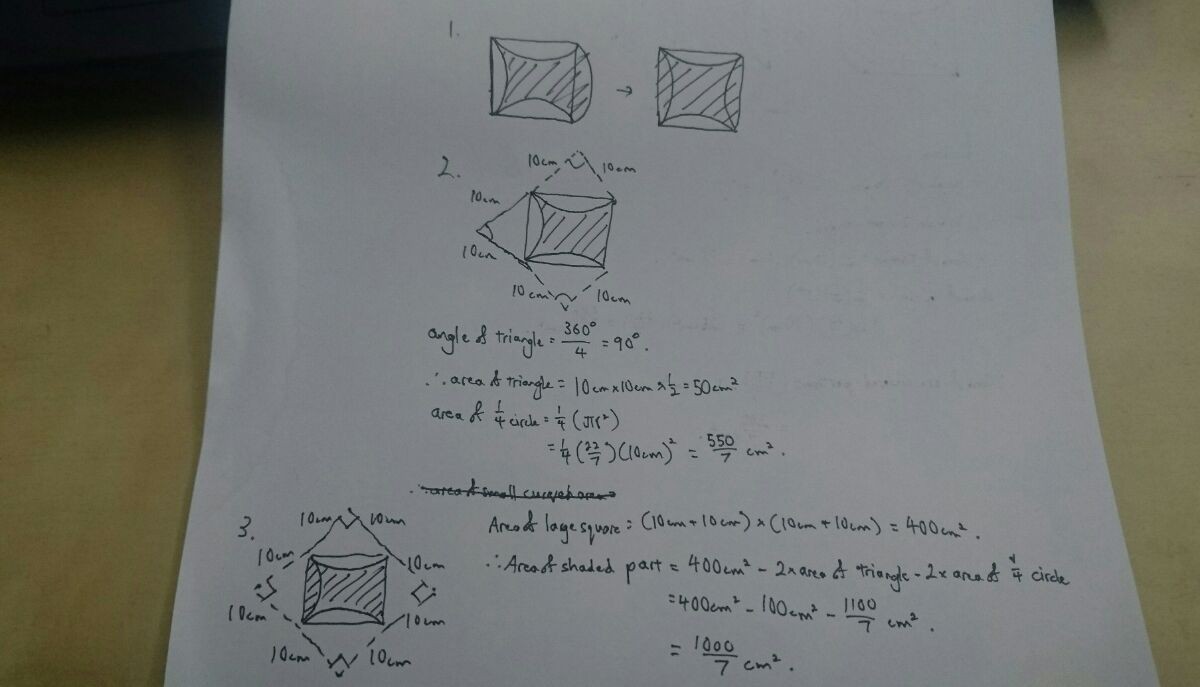Ivan Lim's answer to Sam's Primary 6 Maths question.
done
{{ upvoteCount }} Upvotes
clear
{{ downvoteCount * -1 }} Downvotes
Step 1: Shift the small curved part over to the left.
Step 2: Calculate the area of the quarter circle and the area of the triangle formed by the quarter circle and the small curved part. Since the triangle is formed by a quarter circle, its angle as shown is 90 degrees, which means that it is an isosceles and right-angled triangle.
Step 3: Form four imaginary triangles at each side of the rectangle. This will form a large square, as each triangle's angle is 90 degrees.
Calculate the area of the large square. Now, all you need to find the area of the shaded figure is to subtract the areas of two triangles and two quarter circles from the area of the large square.
Step 2: Calculate the area of the quarter circle and the area of the triangle formed by the quarter circle and the small curved part. Since the triangle is formed by a quarter circle, its angle as shown is 90 degrees, which means that it is an isosceles and right-angled triangle.
Step 3: Form four imaginary triangles at each side of the rectangle. This will form a large square, as each triangle's angle is 90 degrees.
Calculate the area of the large square. Now, all you need to find the area of the shaded figure is to subtract the areas of two triangles and two quarter circles from the area of the large square.
Date Posted:
7 years ago


